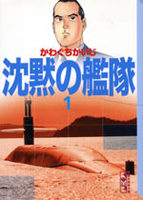As part of my project to inundate myself with Japanese media, I have netflix movies from Japan, including anime, sent to my home. A few days ago I received the anime “Kamichu” about a young girl who discovers that she is a god. The story-line is cutesy Shinto-ist, with little gods and spirits running around helping the girl, Yurie, resolve different issues.

I thought I was going to send this DVD straight back into the mail until I watched the first episode on this particular DVD, “Crossing the River of Time.” In this particular episode, Yurie meets an old man who is reminiscing about his days on the warship Yamato. A member of the engineering crew, Mr. Gen, speaks of his admiration for the ship, saying that he didn’t even feel like stepping on it with his shoes on. The Yamato was the Titanic of battleships, gigantic and doomed. The Yamato was sunk while Mr. Gen was being treated for a foot injury.
One of my projects for this summer is to watch the movie Yamato. Set in 1995, this movie seems very similar to Titanic. A woman returns to start an expedition to visit the wreck of the ship 60 years after it was sunk. The movie apparently relies on flashbacks about the training of the crew and its final suicidal mission. Here is a small clip that hints at how large the Yamato actually was:
The Yamato seems to be resurrected in anime and manga over and over again in different forms. There was an anime series called Space Battleship Yamato in 1973, in which the wreck of the Yamato is retrofitted with space stuff to battle the Gamillans, who are trying to irradiate and take over the Earth. Takeshi Murakami and others have written that this plot reflects Japan’s anxieties over World War II and its post-nuclear bomb realities.


In Kaiji Kawaguchi’s manga, Silent Service, the Yamato “surfaces” again. In this adventure tale a Japanese Commander takes over an American submarine designed by Japanese and names it the Yamato. As Frederick Schodt explains in Dreamland Japan:
Silent Service is a rip-roaring, good-old-fashioned undersea adventure tale. But along the way, it manages to address many of the important political issues that lurk in the background of Japanese politics–the future of the Security Treaty with the United States, the real meaning of Japan’s American-authored constitution, the future of its military and even the future of the nation state. (Schodt, p. 164)
And now here is the Yamato again, but in a seemingly innocent and innocuous anime. Yurie hears Mr. Gen’s story about his pride in serving on the Yamato, but she is more preoccupied with Kenji, a boy in her high school class. Then as she is eating her miso soup, the spirit of a small tug boat appears. As a sunken ship off the coast of Okinawa, the little tugboat, has been guided and inspired by the wreck of the Yamato. But the Yamato misses his home port of Kure, and the tugboat enlists Yurie to help bring Yamato’s spirit back to Kure. There is no out and out war lust in the admiration of this ship, rather the Yamato seems to be admired for just being a great ship.
At one point, the little tugboat exclaims that “Mr. Yamato” was just fulfilling his mission when he was sunk and he must be admired for carrying out his mission. Yurie agrees to help the sould of the old ship and does research on the ship, including receiving classified documents from the Japanese government. She goes back to Mr. Gen who explains, “You know, even if it was unwillingly used in a war, it was still a great ship.”
If you can read Spanish (or understand Japanese) here is an interesting clip:
This raises a few questions for me in my travels this summer. I will be in Hiroshima on August 6th, the 64th anniversary of the first atomic explosion on human beings. I also plan to visit nearby Kure, where there is a museum devoted in-large part to the Yamato. Some of my questions are:
- Why does the Yamato keep getting resurrected over and over again?
- Does the Yamato represent jingoistic nationalism or is it a more complicated symbol?
- How much does respect for the Yamato reflect a love for its technology and as a symbol of Japan as a industrialized nation?
- How important and well-known is the Yamato?
